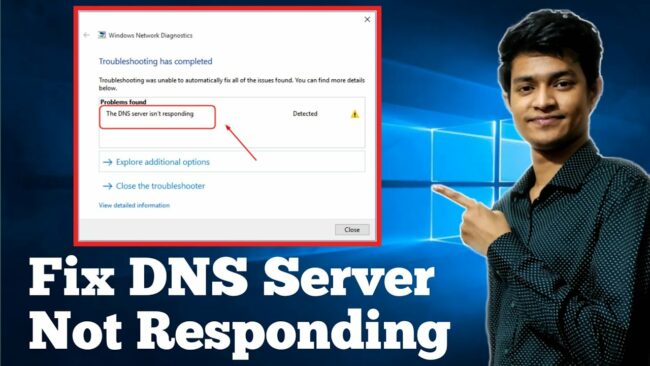In the article “How to Host a WordPress Website on Google Cloud in 8 Minutes,” Red Stapler provides a beginner’s tutorial on setting up a WordPress website on Google Cloud Platform (GCP). The tutorial covers various steps, including creating a VM instance, reserving a static IP address, setting up a web server, creating a swap file, and installing the stackdriver agent for resource monitoring. It also emphasizes the ability to stay under GCP Free Tier quota.
By following this tutorial, small to medium traffic websites can take advantage of Google’s free credits and easily set up WordPress on GCP in just a few minutes. The tutorial starts with the process of creating a project on the Google Cloud Platform and then delves into the steps of setting up a virtual machine as a server through the Compute Engine section. Within the Compute Engine, users have the option to install packages themselves or use existing solutions available in the marketplace.
The tutorial recommends using a lightweight web server like OpenLightspeed instead of Apache to optimize performance on limited resources. Other steps covered include reserving static IP address, configuring SSL, updating the server, and setting up WordPress. Additionally, the tutorial provides instructions on enabling resource monitoring for CPU and RAM usage using the stackdriver agent.
Creating a New Project
To begin hosting a WordPress website on Google Cloud Platform, the first step is to sign in to your Google Cloud Platform account. If you don’t have an account, you can create one by following the prompts on the sign-in page. Once signed in, you will need to create a new project specifically for your WordPress website. This can be done by navigating to the Google Cloud Platform console and selecting the “Create Project” button. Follow the prompts to set a name and ID for your project.
Setting up the VM Instance
After creating your project, the next step is to set up a virtual machine (VM) instance. This will serve as your web server for hosting your WordPress website. To do this, navigate to the “Compute Engine” section in the Google Cloud Platform console. From there, select the “VM Instance” option. This will allow you to create a new VM instance for your project. Click on the “Create” button to begin configuring your VM.
When creating a new VM instance, you have the option to choose a deployment solution from the marketplace. The marketplace offers pre-configured packages that make it easier to set up your VM. For a WordPress website, you can choose a solution such as the LAMP stack, which includes the necessary software for hosting a WordPress site. After selecting the desired solution, you will need to configure the instance size. Choose a machine type with suitable CPU and RAM for your website’s needs. For small to medium static websites, the f1-micro instance should be sufficient.
Next, set the disk size for your VM instance. The default disk size is 10 gigs, but if your website requires more storage, you can increase it up to 30GB within the free tier quota. To allow web traffic to access your VM instance, make sure to enable the necessary firewall settings. This will ensure that your website can be accessed over the internet. Once all the configurations are in place, click on the “Deploy” button to initiate the deployment of your VM instance. Wait for the deployment process to complete, which may take a few minutes.

Reserving a Static IP Address
To ensure that your website retains a consistent IP address, it is recommended to reserve a static IP address for your VM instance. This will prevent the IP address from changing over time. To reserve a static IP address, go to your VM instance details page in the Google Cloud Platform console. Select the “View Network Details” option, and then choose the “External IP Address” tab. By default, the IP address type is set to “Ephemeral,” which means it can change over time. To change it to a static IP address, select the option to make the IP type static.
Setting up WordPress
Now that your VM instance is up and running, you can proceed with setting up your WordPress website. To connect to the instance, use SSH (Secure Shell) by clicking on the SSH button for your instance. Before proceeding, it is recommended to set up secure shell access for your server. This will ensure secure communication between your local computer and the VM instance. Once connected via SSH, you can update the server to the latest version to ensure that you have the most up-to-date software and security patches. To access your WordPress website, open a web browser and enter the IP address of your VM instance. This will display the WordPress setup page. Follow the prompts to set the language and create a WordPress admin user.
Updating DNS Settings
To make your WordPress website accessible to the public, you need to update the DNS settings of your domain to point to the IP address of your VM instance. This will allow visitors to reach your website using your domain name. Contact your domain registrar or DNS provider to update the A record of your domain to the IP address of your VM instance. Once the DNS changes have propagated, your website will be accessible using your domain name.
Optimizing Server Performance
To optimize the performance of your server, there are a few additional steps you can take. One option is to turn on a swap file, which allocates disk space to be used as memory when RAM is running low. To set up a swap file, allocate a file with a sufficient size (e.g., 1GB), set the file permissions, and activate the swap file. This will help improve the stability and performance of your server. Additionally, you can configure the swap file to persist across server restarts. This ensures that the swap file remains active even after a server reboot, maintaining the enhanced performance settings.
Monitoring Server Resources with Stackdriver
To monitor the resources and performance of your server, you can use Google’s Stackdriver, which provides valuable insights into CPU and RAM usage. You can view CPU usage directly from the Google Cloud Platform console. Additionally, you can install the Stackdriver agent to monitor RAM usage. Enable instance metadata for Stackdriver to ensure accurate monitoring. After setting up and checking the Stackdriver status, you can view RAM usage statistics using the metrics explorer. Enter “GCE VM instance” as the resource type and select the “memory usage” metric. Monitoring server resources with Stackdriver gives you valuable insights into your website’s performance and allows you to make adjustments as needed to optimize resource allocation.
Conclusion
Hosting a WordPress website on Google Cloud Platform can be done in just a few minutes by following the steps outlined in this article. By creating a new project, setting up a VM instance, reserving a static IP address, configuring WordPress, updating DNS settings, optimizing server performance, and monitoring resources with Stackdriver, you can successfully host and manage your WordPress website on Google Cloud Platform.
The benefits of hosting on Google Cloud Platform include access to the free tier quota, the flexibility to scale or upgrade your server as needed, and the ability to fully control and manage your hosting environment. With powerful tools and technology, Google Cloud Platform offers a reliable and scalable solution for hosting your WordPress website.








